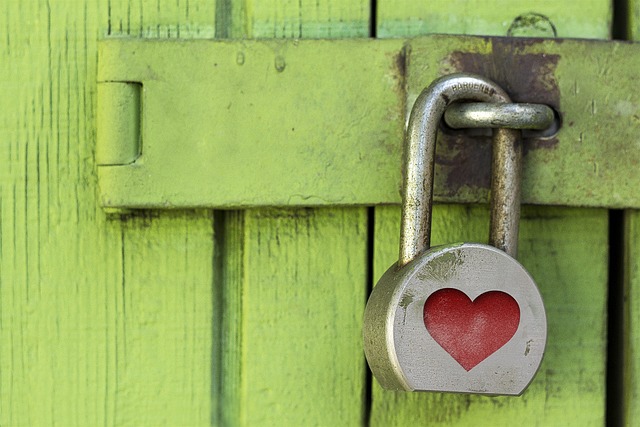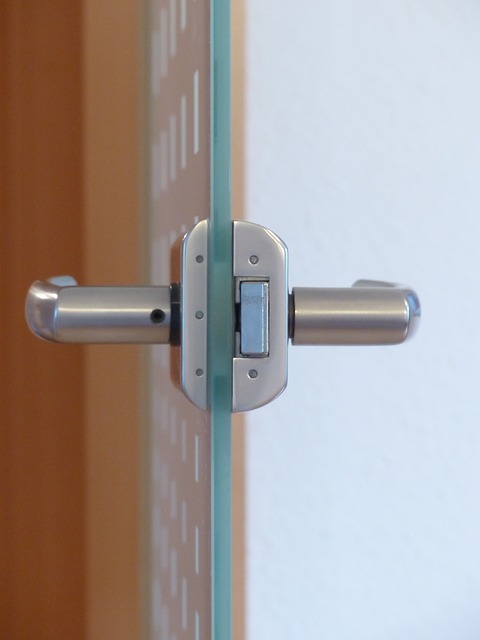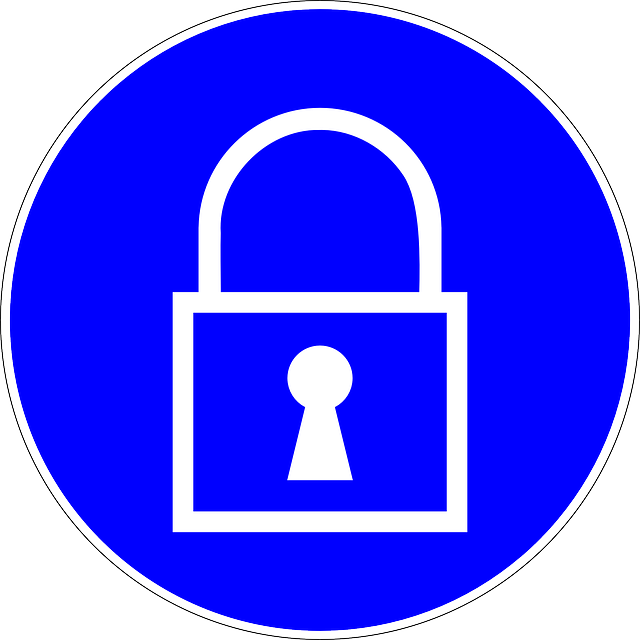Access control systems equipped with smart locks and keyless door lock technology have become central to both commercial and residential security, offering a modern alternative to traditional keys by providing secure, electronic mechanisms for entry that can be controlled via biometrics, access codes, or mobile apps. These systems provide real-time monitoring, dynamic permission updates, and remote management capabilities, which are crucial for effective visitor management and security administration. They also allow for precise tracking of who enters a facility, ensuring that only authorized individuals gain access. The integration of these systems with other security measures like video surveillance and alarm systems enhances situational awareness and overall security. Organizations benefit from the scalability and adaptability of smart lock solutions, which are designed to meet diverse operational needs and can be easily integrated with existing infrastructure for a cohesive security strategy. The adoption of such advanced access control measures underscores a significant shift towards more sophisticated and responsive security solutions in today's technological landscape, emphasizing the importance of leveraging smart locks and keyless door lock technologies to maintain robust security frameworks and streamline visitor management processes.
In today’s security-conscious environment, managing visitor access efficiently and securely is paramount. This article delves into the intricacies of professional-grade access control systems, emphasizing the pivotal role of smart locks and keyless door lock solutions. We explore the critical features that distinguish these systems from conventional methods, ensuring both streamlined visitor management and enhanced safety. From evaluating top-tier access control systems to integrating them with robust security protocols, our comprehensive guide outlines best practices for leveraging smart lock technology to maintain secure, yet accessible visitor interactions. Keyless door locks are not just a convenience; they are a cornerstone of modern security strategies. Join us as we navigate the intersection of cutting-edge technology and practical access management.
- Understanding Access Control Systems: The Role of Smart Locks and Keyless Door Lock Solutions
- Evaluating Professional-Grade Access Control Systems for Visitor Management
- Key Features to Consider When Implementing a Smart Lock System for Visitor Access
- Integrating Advanced Access Control with Security Protocols for Enhanced Visitor Safety
- Best Practices for Managing Visitor Access with Smart Locks and Keyless Door Lock Technology
Understanding Access Control Systems: The Role of Smart Locks and Keyless Door Lock Solutions

Access control systems play a pivotal role in safeguarding sensitive areas and managing visitor access within both commercial and residential environments. In today’s technological landscape, smart locks and keyless door lock solutions have become synonymous with state-of-the-art security measures. These systems offer unprecedented flexibility and convenience by eliminating the need for traditional keys. Instead, they rely on electronic mechanisms that can include biometric verification, unique access codes, or secure mobile apps to control entry points. This not only streamlines the visitor management process but also ensures that only authorized individuals can access certain areas. The integration of smart locks into access control systems allows for real-time monitoring and immediate updates to permissions, providing a dynamic security framework that adapts to changing access needs with ease. Furthermore, these keyless solutions often come equipped with advanced features such as remote management capabilities, which enable facility managers to grant or revoke access remotely, enhancing the overall security posture of the premises.
Evaluating Professional-Grade Access Control Systems for Visitor Management

In modern security frameworks, professional-grade access control systems play a pivotal role in safeguarding sensitive areas while streamlining visitor management. These systems often incorporate advanced smart locks, which serve as keyless door lock solutions, offering a seamless blend of convenience and robust security measures. The integration of these smart locks allows for real-time tracking and monitoring of who accesses a facility, providing administrators with granular control over visitor permissions. Additionally, the use of unique access credentials, such as biometric data or mobile authentication, ensures that only authorized individuals can gain entry, enhancing overall security and privacy within the premises.
Selecting the right professional-grade access control system for visitor management requires careful consideration of various factors, including scalability, ease of use, and integration capabilities with existing infrastructure. A system equipped with a robust cloud-based platform can facilitate centralized management of visitor access rights, ensuring that permissions are up-to-date and consistent across all entry points. Furthermore, the latest advancements in keyless door lock technology allow for dynamic access privileges, enabling businesses to swiftly adapt to changing security needs without the delays associated with traditional key-based systems. This agility is particularly beneficial for facilities with fluctuating visitor traffic or sensitive data that demands strict access control measures.
Key Features to Consider When Implementing a Smart Lock System for Visitor Access

When implementing a smart lock system for visitor access in commercial settings, it’s crucial to prioritize security features that align with the needs of your business. Access control through keyless door locks offers a higher level of security compared to traditional keys, as they can be easily duplicated or lost. Smart locks provide real-time tracking and customizable entry permissions for visitors, ensuring that access rights are precisely tailored to individual visitor needs and can be instantly revoked if necessary. Additionally, these systems often come equipped with advanced features such as biometric scanning, mobile credentialing, and integration with existing security infrastructure, which enhances the overall security posture of your facility.
In terms of functionality, a smart lock system should offer seamless integration with other access control solutions to streamline visitor management across various entry points. The ability to generate unique, time-bound digital keys for visitors can significantly improve operational efficiency by reducing administrative overhead associated with traditional key handling and tracking. Moreover, the system’s user interface should be intuitive, allowing staff to easily schedule and manage visitor appointments. This not only improves the visitor experience but also ensures a higher level of control over who has access to sensitive areas within your premises.
Integrating Advanced Access Control with Security Protocols for Enhanced Visitor Safety

In today’s security-conscious environment, integrating advanced access control systems with robust security protocols is paramount for visitor safety. These systems often employ smart locks, a keyless door lock technology that leverages electronic credentials or biometric verification to grant access. By doing so, they eliminate the vulnerabilities associated with traditional mechanical keys and offer a more secure and manageable way to monitor who enters and exits a facility. The use of these systems allows for real-time tracking of visitor movements and access rights can be easily adjusted according to changing needs or security levels. This not only enhances the overall security posture but also streamlines the process of managing visitor access, ensuring that only authorized individuals can enter sensitive areas.
Furthermore, the integration of these access control systems with security protocols encompasses a multi-layered approach to safety. It includes monitoring entry points, setting up automated alerts for unauthorized attempts, and maintaining an audit trail for all access events. This level of detail is crucial for post-event analysis, enabling swift responses to any security breaches. Additionally, the implementation of such systems often comes with scalable solutions that can be tailored to the specific needs of different facilities, whether it’s a corporate office, a healthcare institution, or a high-security government building. This flexibility, combined with the reliability and advanced features of smart lock technologies, makes them an indispensable tool for any organization prioritizing visitor safety and access management.
Best Practices for Managing Visitor Access with Smart Locks and Keyless Door Lock Technology

In modern security frameworks, implementing best practices for managing visitor access with smart locks and keyless door locks is paramount. Access control systems have evolved significantly, offering a range of sophisticated solutions that go beyond traditional keys and locks. These smart lock systems provide a seamless integration of security and convenience, allowing for real-time monitoring and management of who enters a facility and when. To ensure optimal security and efficiency, it’s crucial to establish clear protocols for visitor access. This includes setting up unique, time-limited access codes or digital keys that expire after the visitor’s scheduled duration. Additionally, integrating these systems with broader security infrastructure, such as video surveillance and alarm systems, enhances situational awareness and provides a comprehensive approach to managing access points. Regular software updates and hardware maintenance are also non-negotiable for maintaining system integrity and reliability.
Furthermore, the deployment of smart locks and keyless door locks should be accompanied by a robust policy framework that outlines acceptable use and emergency protocols. Training staff to effectively manage these systems is essential, as is regularly reviewing and updating access permissions to reflect changes in personnel or visitor status. The use of cloud-based management platforms allows for centralized oversight and control, enabling quick adjustments to access rights from any location. By adhering to these best practices, organizations can significantly bolster their security posture while ensuring a smooth and secure visitor experience.
In conclusion, the strategic deployment of professional-grade access control systems, particularly those incorporating smart locks and keyless door lock solutions, stands as a pivotal component in safeguarding visitor access while streamlining management processes. The integration of these advanced systems not only enhances security protocols but also offers unparalleled convenience and adaptability to modern business needs. By considering the outlined features and best practices when implementing such technology, organizations can ensure a robust and efficient approach to managing visitor access. Embracing the potential of smart lock and keyless door lock systems is essential for any entity aiming to maintain both the integrity of their premises and the satisfaction of their guests.
